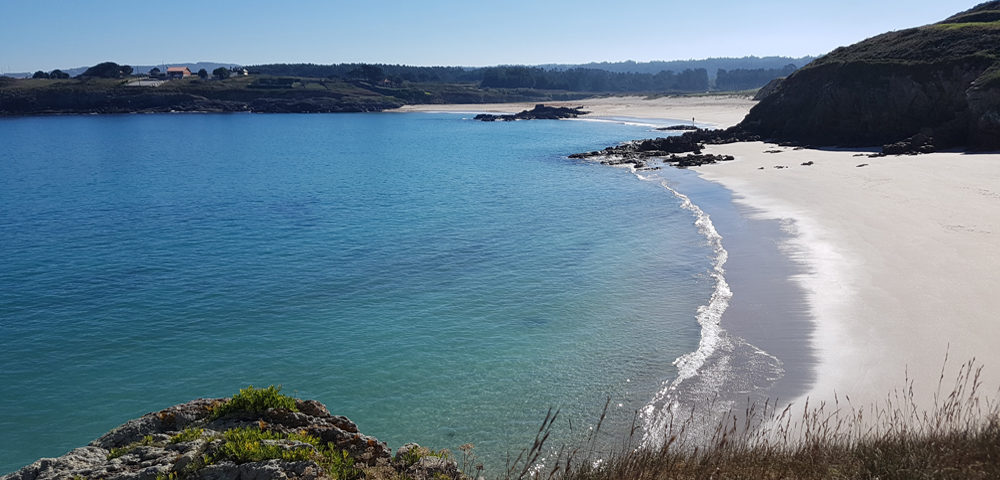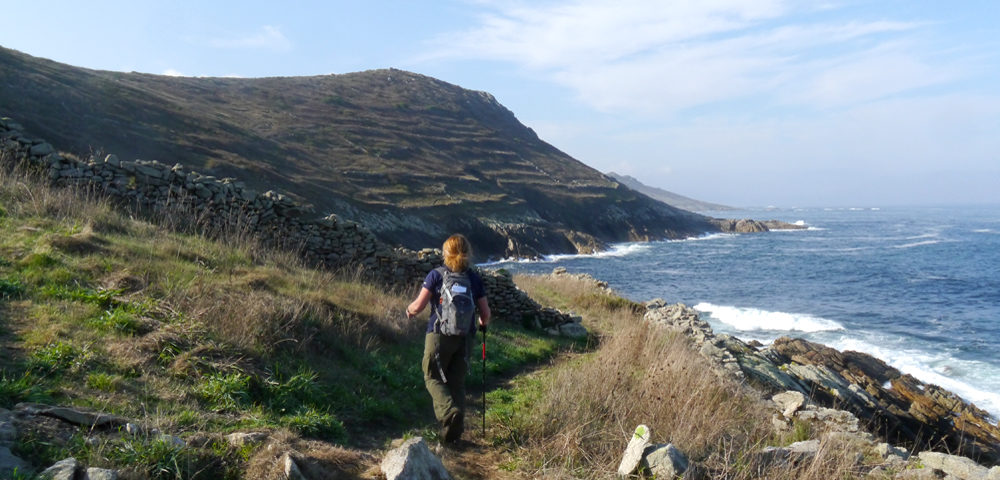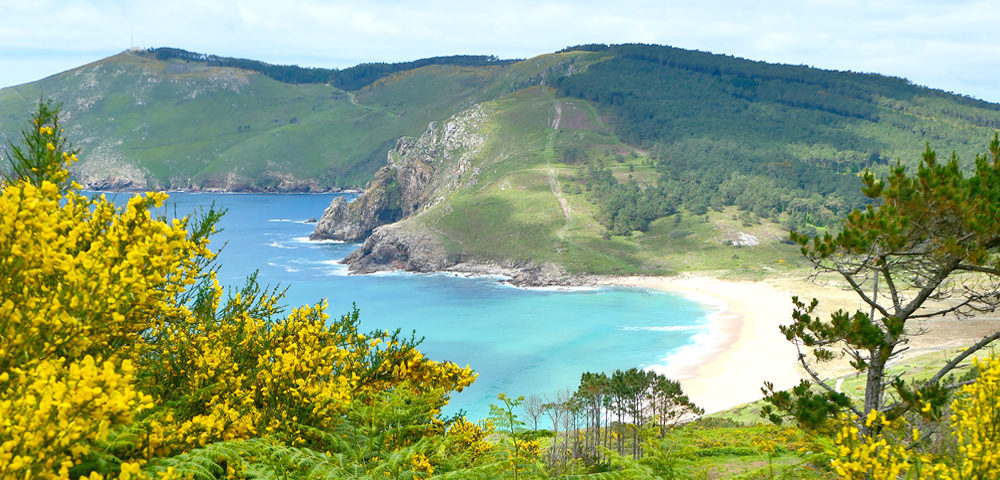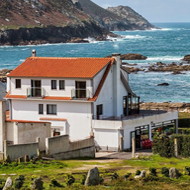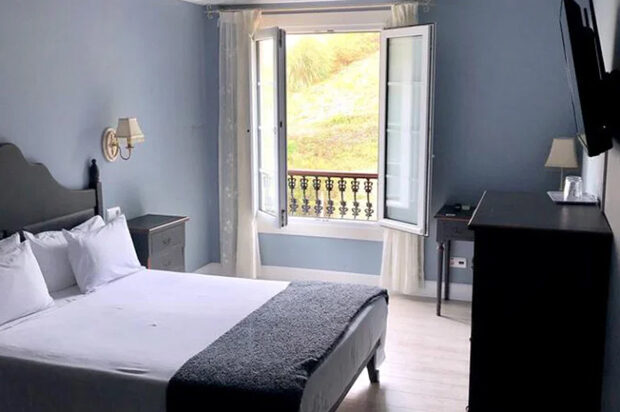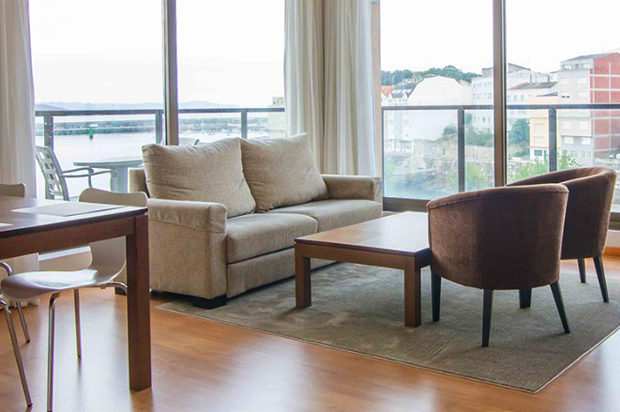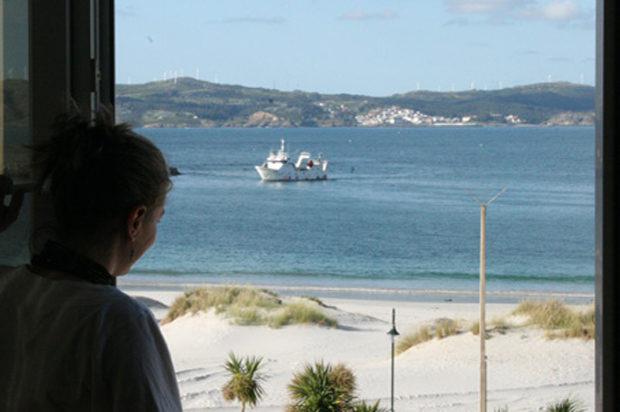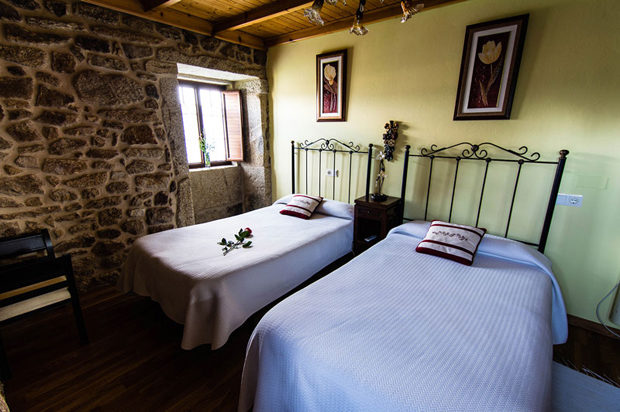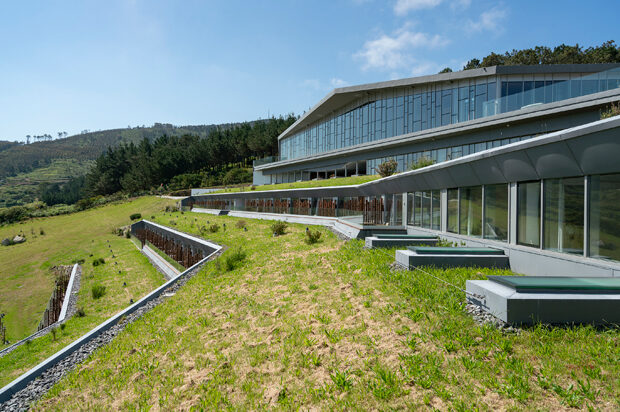
Office hours: Mon - Fri 09:00 - 17:30; Sat 09:30 - 13:00
Office hours: Mon - Fri 09:00 - 17:30; Sat 09:30 - 13:00
Office hours: East Coast USA: Mon - Fri 09:00 - 17:30 (04:00 - 12:30 local time); Sat 09:30 - 13:00 (04:30 - 08:00)
West Coast USA: Mon - Fri 09:00 -17:30 (01:00 - 09:30 local time); Sat 09:30 - 13:00 (01:30 - 05:00)
Office hours: Ottawa: Mon - Fri 09:00 - 17:30 (04:00 - 12:30 local time); Sat 09:30 - 13:00 (04:30 - 08:00)
Vancouver: Mon - Fri 09:00 - 17:30 (01:00 - 09:30 local time); Sat 09:30 - 13:00 (01:30 - 05:00)
Office hours: Canberra: Mon - Fri 09:00 - 17:30 (20:00 - 04:30 local time); Sat 09:30 - 13:00 (20:30 - 24:00)
Office hours: Mon - Fri 09:00 - 17:30 (22:00 - 06:30 local time); Sat 09:30 - 13:00 (22:30 - 02:00)
Office hours: Mon - Fri 09:00 - 17:30 (check internet for local time equivalent); Sat 09:30 - 13:00
Galicia: Lighthouse Way
Along the wild Atlantic coast
Back to RoutesTravellers Blog
An architect’s view of A Coruña
Wednesday 6th November | Posted by On Foot Staff
 view article
view article

At a glance
Lighthouse Way 10-night option - the full version. The first two days are tough, so gentler walkers should start at Laxe (7 night option) or Camariñas (5 nights). Add a night in Santiago if you have time. See 'Prices' tab for what's included.
Suggested route pairing: Northern Portugal
How much walking?
Full days: 14¼-25½ km per day, 4-7¾ hrs walking
Using shortening options: 9½ - 16km, 2½-4½ hrs walking using taxi starts
Empty sandy beaches and fresh seafood on the Camino dos Faros
Welcome to the last unspoilt coast of Europe – the Costa da Morte. Grand cliffs, sweeping sandy beaches, lonely capes and iconic lighthouses from a time when this coast, with its fierce tides and dangerous shoals was rightly respected by mariners and feared by their loved ones at home. Fishing is still an important activity on this coast, witness the thriving little ports with their earthy pubs and seafood restaurants.
Our path winds along the “Camino dos Faros” – the Lighthouse Way – and sticks largely to the coast, with the occasional (On Foot designed) foray inland to include an attractive place to stay. In its pure form it is a long and tough walk, but we have arranged short cuts and, courtesy of local taxi drivers, drop-off and pick-up points for those who would prefer a shorter day, maybe to spend some time on the beach!
Hardy walkers could try the full length 10-night version, lesser mortals (or those with insufficient time) should start at Laxe (7-night) or Camariñas.
Cliff walking – not suitable for those with severe vertigo or acrophobia.
Some of the accommodation we use is quite small so please book as early as possible.
Walked by On Foot staff: Simon and Mary
Consider pairing this route with Ribeira Sacra (40 mins by train to Ourense plus taxi), or Northern Portugal (4 hrs by bus and taxi from Santiago) – for more details click here.
REVIEWS: For independent walker reviews of this route submitted to the Association of Independent Tour Operators visit AITO.com.
TRAVEL ADVICE: To find the latest travel advice from the Foreign & Commonwealth Office for UK citizens travelling to Spain, click here. Citizens of other nations will also find it useful, but should always check their appropriate local agency.
ARTICLES: Read an article about On Foot’s Lighthouse Way holiday from The Guardian newspaper here.
Here’s a short film about the Lighthouse Way walk, to give you a flavour of the landscape, local food, and the welcoming Galician people:
And a short clip of folk music in Santiago de Compostela, with singers, drums and traditional Galician ‘gaita’ bagpipes:
Route Highlights
- The unspoilt Galician coast with its lighthouses
- Wild cliffs and windswept headlands
- Empty sandy beaches
- Fresh seafood from local fishermen
- Pretty fishing villages
- Finisterre – the “end of the world”
- Santiago de Compostela (add-on)
This route features the following characteristics and interests: Coast, Remote, Birdwatching, Drive to route, Food, Wine
Things you should know
- There are some very long walking days (with shortening options available).
- The glorious walk follows closely along the edge of the coast, so acrophobia can be a problem.
- Some accommodation is simple, but always with a warm welcome.
- Vegetarians and vegans may struggle. Pescatarians will have a ball!
We Recommend
A night or two at the end in Santiago de Compostela would appear sensible - or you could hire a car and explore the "Rias Baixas" - the indented coast south of Finisterre.
Food and drink
Galicia is a seafood lover’s paradise and the range available in the restaurants at night is extraordinary. We liked “navajas” (razor clams, often in a garlic or white wine sauce) and “percebes”, the oddly shaped goose barnacles that men and women take great risks to harvest, and which are esteemed the iconic delicacy of the region.
For wine lovers, Albariño is the best to have with seafood, though you might also try the more lowly Ribeira whites. There is an interesting red too (Mencia).
Foodies doing the 10-night version (only) can have dinner at two special restaurants – Michelin starred As Garzas at Barizo, adjacent to your accommodation, on the first walking day, and Mar de Ardora near Pontecesco on the third (taxi from and back to Laxe can be booked locally). Pre-booking is essential, but our local contact Aznar can help (Friday and Saturday only).
How much Walking?
Using shortening options: 9½ - 16km, 2½-4½ hrs walking using taxi starts
If done in its complete form without transfers this is a route for the true hiker, with some long and sometimes tough days, but we have arranged with local contact Aznar to be on hand to arrange shortening option taxis as and when required. Easy navigation with waymarked paths – the only difficulties come when trying to refind the route on the other side of a beach! Some of the paths are unimproved so can be challenging and slow-going.
Medium-hard: Average cumulative uphill stretches (CUSs) 515m (215m-940m) per day.
Easy-medium: CUSs 324m (250m-400m) per day using taxi shortening options on the longer days.
Highest point on route: 280m.
Acrophobia/vertigo warnings: Lots of high cliff walking. Not suitable for the severely acrophobic.
On Foot Holidays Companion app available from 2025, for GPS navigation/mapping and all other documentation and advice. Separate GPX files for your own device also available.
Important note: Times given for each day are walking times for an “average” walker and exclude stops. “CUSs” stands for “Cumulative Uphill Stretches” and measures the aggregated ascents in each day, expressed in metres of climb. See “Walk Grading” for more information.
When to go?
The best months to walk: May, June, September
Other possible months: April, July, August, October, early November
The 10-night version of this route can be done from April to mid-July and from September to mid-October, when the accommodation closes. (This option is not offered in August due to lack of availability of accommodation in Malpica, Barizo and Corme when they demand at least a 3- night stay). If you’re keen to walk the 10-night option in the high summer, consider taking three nights in Corme with taxis to enable the walking. The shorter versions (7 and 5 night) can be walked throughout the summer (availability permitting) and into November.
Start Dates
Weather Chart
Rainfall and temperature chart for Camariñas
Galicia's weather is not easy to predict, as you would expect with an Atlantic climate. So you have to be prepared for the worst - and the best. We cannot guarantee cloudless days for swimming off the sandy beaches, but the likelihood is that you will have a bit of a mixture of sun and rain. The best times to go are May, June and September, though the better weather often continues into October. In April the sea may be chilly for some.
Itinerary

Day 1 - Arrive in Malpica
You reach Malpica normally by taxi from Santiago or A Coruña airport. Settle in, have a look round this fishing port and select somewhere to eat (your first seafood supper of many?).
Day 2 - Malpica to Niñons
A long first day, so some may prefer to stop at Barizo (12½km) where your accommodation is. For those who continue to Niñóns be warned that the stretch is tough, with a lot of up and down and tricky underfoot conditions. This second part is for the experienced walker only, but the lonely majesty of the peninsula makes up for it. Taxi back to Barizo.
The first stretch is easier and has several lovely beaches to tempt the swimmer, so be prepared. In common with most beaches on the Camino dos Faros there are no facilities of any sort – that, some might say, is their joy. (Medium-hard 6 hrs walking (allow 8 hrs), 20½ km (13 miles), CUSs 685m; or to Barizo Medium 3½ hrs walking (allow 4¾ hrs), 12½ km (8 miles), CUSs 350m).
Day 3 - Niñóns to Corme
A day of different sections. The first 4 km or so to Enseada de Barda is reasonably easy going until the descent to Barda beach, and has three excellent swimming beaches. After Barda however the walking comes first, with a long (4 km) stretch along the cliffs and a 1 km climb inland to Roncudo hamlet. The 1½ km to the lighthouse at Punto do Roncudo is magnificent – perfect contouring with the added delight of the lighthouse suddenly appearing round a rock. The final stretch of 4 km to Corme is along the road servicing the lighthouse – there is no other route, and it has the advantage of being quiet, easy walking at the end of a long day (taxi can be called). (Medium-hard: 6 hrs walking (allow 8 hrs), 16¼ km (10 miles), CUSs 570m. Alternative: ride with luggage to Barda and walk from there – Medium: 4½ hrs (allow 6 hrs), 12½ km (8 miles), CUSs 350m)
Day 4 - Corme to Laxe
A long but easier day, with a lot of variation and some fine seacoast walking, quite different from the previous two days. The first section to Praia de Balarés can be tough going, though worth it for the views, while the run in to Ponteceso is long and flat, encompassing sand dune and salt marsh habitats. After a short main road stretch there is a short section through quiet woodland, then a long, flat paved seashore cycle path which is far more fun than it sounds as it is easy walking with some terrific, yet varied views. Half an hour of quiet road walking follows, then some of the finest cliff walking the writer has found, with a lovely beach at the halfway point. The approach to Laxe is tremendous, finishing with a 700m stretch across the sand! (Medium-hard: 7¼ hrs walking (allow 9¾ hrs), 25½ km (16 miles), CUSs 450m. Alternative: ride with luggage to Ponteceso, then walk from there – Medium: 4½ hrs walking (allow 6 hrs), 16 km (10 miles), CUSs 300m).
Day 5 - Laxe to Camelle or Arou
A great day of some lovely contrasts, with the lighthouse of Laxe at the start, followed by some fabulous cliff walking, before cresting the hilltop at O Peñon, for a stunning view of the Praia do Soesto, your first great swimming beach. A gentle stroll follows round to the huge O Paio bay, and the walking is easy now all the way to Camelle. (Medium: 4¼ hrs walking (allow 5¾ hrs), 14¼ km (9 miles), CUSs 390m. If staying in Arou, add 1 hr walking (allow 1¼ hrs), 3¼ km (2 miles), CUSs 35m)
Day 6 - Camelle or Arou to Camariñas
The first part of this long day is the most arduous, as far as the Cimiterio dos Ingleses (3½ hrs), so this is a suitable drop-off point for those who would prefer an easier day. The fishing bases at Punta Lobeiras and Santa Marina give interest to the first two hours, while the remainder of the day is taken with golden beaches and sweeping vistas of the lighthouse at Cabo Vilán. Watch out for the sting in the tail though – the 8 km run-in to Camariñas after the lighthouse (though you could always call a taxi). (Medium-hard: 7¼ hrs walking (allow 9¾ hrs), 24¾ km (15½ miles), CUSs 470m. If staying in Arou: 6¼ hrs walking (allow 8¼ hrs), 21½ km (13½ miles), CUSs 435m. Shorter option – from Cimiterio des Ingleses after a taxi start: Medium 3¾ hrs walking (allow 5 hrs), 15 km (9½ miles), CUSs 300m)
Day 7 - Camariñas to Cereixo
Today’s walk couldn’t be any more different to those that came before if it tried. An easy day on good tracks and paths that wend their way inland to explore Galicia’s more rural side of life. There’s a chance for a swim at Ariño Beach which you cross on the way to A Ponte de Porto, where you should stop for lunch. Then follow the course of the River Porto to the fascinating site of Torres de Cereixo, before heading to Casal de Cereixo, a lovely converted farmhouse, for an excellent supper and a quiet night’s sleep. (Easy-medium: 4 hrs walking (allow 5½ hrs), 15¾ km (10 miles), CUSs 250m)
Option
For the time-poor, this day and the following can be combined, missing out the night in Cereixo.
Day 8 - Cereixo to Muxia
Having waved a fond “hasta luego” to your lovely hosts at Casal de Cereixo, today’s walk takes you quickly back to the Camino you left yesterday. Follow the Rio Porto to its mouth and you will suddenly realise how quiet the last day was, away from the crashing waves of the Atlantic. As you head to Muxia, you will visit the unspoilt village of Merexo and the deserted mills of Os Muinos. Swimming is definitely on the cards today too, with at least three beaches you could test out, conditions permitting. (Easy-medium: 4¾ hrs walking (allow 6¼ hrs), 15½ km (9½ miles), CUSs 375m)
Day 9 - Muxía to Lires
Let the drama begin again! After a couple of easier days, the excitement starts almost as soon as you leave your accommodation with a quick scramble up to the Monte Corpiño mirador with amazing views back to Muxia and beyond. Then explore the end of the peninsula and the Nosa Señora da Barca church and lighthouse before setting off for Lourido Beach and your first chance for a swim. Today is a long and quite tough walk (even though we have abridged it to keep it within the capabilities of most). Follow the coast and climb up to the top of Monte Pedrouzo before descending back to sea level at the beach of Moreira. After that, the going is easier and with a few more ups and downs, you will explore a more rural part of the coast before descending once more to the huge beach at Nemiña. Good roads and tracks then take you upriver to your much needed accommodation for the night in Lires. (Hard: 7¼ hrs walking (allow 9¾ hrs), 23½ km (14½ miles), CUSs 940m, or Medium: 2¼ hrs walking (allow 3 hrs), 9½ km (6 miles), CUSs 500m after a taxi start)
Day 10 - Lires to Finisterre
And so to the end of the world – Finisterre… and what an epic journey too! The day starts peacefully enough as you follow the path of the River Lires down to the point at which it disgorges into the Atlantic, but then you climb up to the cliff tops and spend much of the morning following the coastline. Then descend to the golden beach of Rostro – over a mile long and a perfect place to work on your sun tan.
It’s up to the cliff tops again after that and you’ll pass rocky coves far below but will sometimes feel the spray from the crashing waves even at this height. From the peak of Veladoiro you’ll be able to see Finisterre in the distance but it’s still quite a walk. A further chance for a swim as you pass the town of Fisterra and then, following a final climb to remind you that this is a pilgrimage, it’s onwards to the lighthouse where you may have chosen to stay for the night. (Hard: 7¾ hrs walking (allow 10 hrs), 20¾ km (13 miles), CUSs 830m, or Medium: 4¼ hrs walking (allow 5¾ hrs), 11 km (7 miles), CUSs 400m after a taxi start)
Depart for home
…or choose to spend a further night in Fisterra, or why not a night or two in either Santiago de Compostela or A Coruña?
Travel Information
ARRIVING BY TRAIN
Nearest railway stations:
Start and Finish: Santiago de Compostela or A Coruña
Train timings:
Santiago – Madrid ~4½ hrs
Santiago – A Coruña 1 hr
ARRIVING BY CAR
Parking is available in Malpica and Camarinas on quiet side streets for the 10- and 5-night versions; in Laxe (7-night), parking in the hotel car park is best (€6.50 per day). Returning, no supplement for taxi back to car (except Malpica, small supplement).
ARRIVING AND DEPARTING BY AIR
The best “local” airports are either Santiago de Compostela or A Coruña. Intercontinental flights would use Madrid – internal flights from there connect with both airports (or transfer by train – see below).
While transfers to the start by bus are theoretically possible, they are poorly timetabled and also involve a final leg taxi in any event. Buses between Fisterra and Santiago or A Coruna are also possible but they take a long time – therefore a taxi transfer from and back to both airports (or railway stations/town centres) is included in the holiday price.
SANTIAGO DE COMPOSTELA
Land by: 18:00 for taxi transfer to first hotel
Return flight earliest: 14:30 (no time limit with pre-booked taxi)
A CORUNA
Land by: 18:00 for taxi transfer to first hotel.
Return flight earliest: 14:00 (no time limit with pre-booked taxi)
Flight information can change rapidly and not all flights run daily. Please do check directly with the airlines’ websites or Skyscanner (see below) before finalising any booking with us. Do not book your flights until we have confirmed that we have provisionally reserved accommodation for you.
For up-to-date schedules and flights from all airports check Skyscanner.
See “Getting to the start of the walk” below for transfer information.
Getting to the start of the walk
OUTWARD
Start points are Malpica (full route), Laxe (7-night route) or Camariñas (5-night route). As the bus service is a little infrequent (and no buses on a Sunday), a pre-booked taxi to get you to your first night’s accommodation is included in the holiday price. For those wishing to make their own way to the start a discount will be available.
RETURN
End point is Fisterra. Regular bus from Fisterra to Santiago de Compostela (2-3 hrs) and regular shuttle bus to Santiago airport. For A Coruña, regular bus from Fisterra to A Coruña bus station (2 hrs) then local taxi (easiest) or shuttle bus.
Further nights in Santiago: From Santiago centre, A Coruña airport can be reached by either train or bus, both involving a change in A Coruña to local bus or taxi.
Pre-booked taxis available for all return journeys. For pre-bookable taxi prices, see “Prices”.
Full transfer advice, including timetables, is provided in your Walkers’ Pack. Contact us if you would like additional pre-booking information.
Where You'll Stay
As can be expected on a long-distance trail, one has to a certain extent to accept what is available, but we have done our best to select the most charming. Small pensions, large family hotels and zany hosts are all in the mix, and you can end at the former lighthouse buildings at Finisterre – now converted into a boutique hotel and restaurant!

Night 1
Malpica – Hotel Fonte do Fraile (B&B)
Comfortable, family-run hotel in the new part of the town about 15 minutes' walk from the port.

Night 3
Corme – Apartamentos Playa de Osmo (accommodation only)
Spacious apartments close to the seafront. Breakfast and dinner taken in the village.

Night 4
Laxe – Hotel Playa de Laxe (B&B)
Modern, family-run hotel with well-equipped rooms, very close to the shore.

Night 5
Camelle or Arou – Chambres d’Hotes (B&B)
A selection of intimate village houses, well positioned for the beach, bars and restaurants. Shared bathrooms.

Night 6
Camariñas – Hotel Puerto Arnela (B&B)
Comfortable hotel with good restaurant, just over the road from the port. Restaurant closed Sundays.

Night 7
Cereixo – Casal de Cereixo (dinner, B&B)
Lovely old farmhouse in a rural setting where a warm welcome is guaranteed. Eat well in Julio's dining room and perhaps sample his (very strong!) orujo, a source of pride for him.
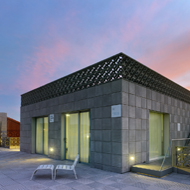
Night 8
Muxia – Bela Muxia (accommodation only)
Very modern and spotlessly clean albergue with private rooms, near the harbour.
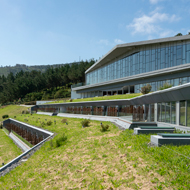
Night 8 (Upgrade)
Muxia – Parador Costa da Morte (B&B)
Extraordinary contemporary Parador just outside the town, partially built into the hillside with stunning views. Spa and pool.
Santiago de Compostela hotels:
For those taking a further night or two in Santiago de Compostela either before or after the walk, we have a choice of two lovely hotels to offer you.
Choose either the  Hotel Rua Villar (left), a centrally loca
Hotel Rua Villar (left), a centrally loca ted hotel just 100m from the Cathedral, or celebrate in style at the Parador de Santiago (right), an ornate former pilgrims’ hospital built in 1499, situated in Santiago’s main square.
ted hotel just 100m from the Cathedral, or celebrate in style at the Parador de Santiago (right), an ornate former pilgrims’ hospital built in 1499, situated in Santiago’s main square.
A Coruña hotel:
Alternatively, make a stop in A Coruña before or after the walk. The Eurostars Blue Coruña Hotel has been suggested by one of our clients (who also wrote this blog about the town). It’s a modern, 4-star hotel, conveniently located within the central commercial district.



Prices
Total 10 nights in double/twin room, 7 breakfasts (nearby café when not provided), 1 evening meal, 3 picnic lunches, taxi from Santiago or Coruna (town or airport) to Malpica at start, luggage transfers between all hotels on walking route, taxi from Fisterra back to Santiago or Coruna (town or airport) after the walk; full Walkers Pack with route directions, maps, transfer and background information; local telephone support.
Also included: On Foot Holidays Companion app (from 2025), providing navigation/mapping and digital version of the Walkers’ Pack as above. Separate GPX files for your own device also available. If choosing to walk with app only (no printed materials): Discount of £40 per pack (based on one pack per room) from 2025.
All prices are per person unless otherwise indicated, and are based on a standard booking in May. Prices may vary seasonally and stays at O Semoforo at weekends and during holidays are subject to a supplement. A fixed price will be given to you before you commit.
Single Room Supplement (SRS): From £355
Lone Traveller Additional Supplement (LTAS): From £300
Large Party Saving (LPS): Groups of more than 2 people (on an identical itinerary, on the same booking and booked at the same time) – discount of at least £60 per person
Maximum party size: 10
Discount for those making their own way to the first hotel in Malpica.
Add Ons
Extra nights in Laxe, Camariñas, or Fisterra: Contact On Foot – seasonal pricing
Nights in Santiago de Compostela or A Coruña: Contact On Foot – seasonal pricing
Sending Walkers Packs to addresses outside the UK: £20-£60 (per pack, location dependent)
Travellers Blog
An architect’s view of A Coruña
Wednesday 6th November | Posted by On Foot Staff
 view article
view article

Our local team
Aznar Fernandez de Pinedo
Aznar was born and grew up in Bilbao, where he soon developed his love for nature (he is a keen naturalist), hiking and the rural environment in general. He studied Business and has worked for many years in multinational corporations in the IT sector, living in both Barcelona and Madrid. But in 2014 he decided to change his career to work on what he loves most.


